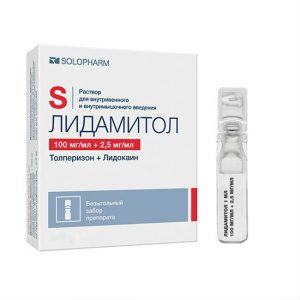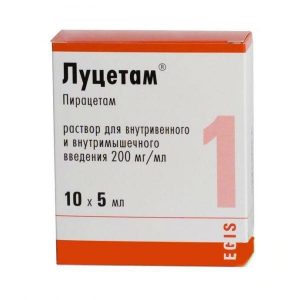Description
Pharmacological action
A synthetic analogue of the hormone of the pineal gland (pineal gland) has an adaptogenic, sedative, hypnotic effect. Normalizes circadian rhythms.
Increases the concentration of gamma-aminobutyric acid (GABA) and serotonin in the midbrain and hypothalamus, changes the activity of pyridoxalkinase, which is involved in the synthesis of GABA, dopamine and serotonin.
Regulates the sleep-wake cycle, daily changes in locomotor activity and body temperature, positively affects the intellectual-mnestic functions of the brain, and the emotional-personal sphere.
Promotes the organization of biological rhythm and the normalization of night sleep. Improves the quality of sleep, accelerates falling asleep, regulates neuroendocrine functions. Adapts the body of weather-sensitive people to changes in weather conditions.
Indications
For sleep disorders, including caused by rhythm disturbance “sleep-wakefulness”, such as desynchronosis (abrupt change of time zones).
Contraindications
hypersensitivity to the components of the drug
autoimmune diseases
liver failure
severe renal failure
pregnancy and lactation
age up to 18 years (drug efficacy and safety have not been established).
With caution
Welson ® should be used with caution in patients with varying degrees of renal failure.
Composition
One tablet, film-coated, contains:
Active ingredient:
melatonin – 3 mg.
Excipients:
calcium hydrogen phosphate dihydrate – 64.67 mg,
microcrystalline cellulose – 25.00 mg,
povidone K 25 – 3.33 mg,
croscarmellose sodium – 2.00 mg,
talcum – 1.00 mg,
silicon colloidal dioxide – 0.50 mg,
calcium stearate – 0.50 mg.
Shell composition:
opadray white (03A280002) – 3.00 mg [hypromellose (hydroxypropyl methylcellulose) – 40%, microcrystalline cellulose – 32%, titanium dioxide – 20%, macrogol (polyethylene glycol) – 8%].
Dosage and administration
Inside, with plenty of fluids.
In case of sleep disturbance: 3 mg 1 time per day 30-40 minutes before bedtime.
With desynchronosis as an adaptogen when changing time zones: 1 day before the flight and in the next 2-5 days, 3 mg 30-40 minutes before bedtime.
The maximum daily dose is 6 mg.
Elderly patients
With age, there is a decrease in the metabolism of melatonin, which must be considered when choosing a dosage regimen for elderly patients. With this in mind, in elderly patients, it is possible to take the drug 60-90 minutes before bedtime.
Patients with impaired renal function
The effect of varying degrees of renal failure on the pharmacokinetics of melatonin has not been studied, so melatonin should be taken with caution in such patients. Patients with severe renal failure are not recommended.
Side effects
Classification of adverse reactions by organs and systems with an indication of their frequency of occurrence: very often ( 1/10), often ( 1/100, <1/10), infrequently ( 1/1000, <1 / 100), rarely ( 1/10000, <1/1000), very rarely (<1/10000), including individual messages, frequency is unknown (frequency cannot be estimated based on available data). Infectious and parasitic diseases: rarely – herpes zoster. Disorders from the blood and lymphatic system: rarely – leukopenia, thrombocytopenia. Disorders of the immune system: frequency unknown – hypersensitivity reactions. Metabolic and nutritional disorders: rarely – hypertriglyceridemia, hypokalemia, hyponatremia. Mental disorders: infrequently – irritability, nervousness, anxiety, insomnia, unusual dreams, nightmares, anxiety rarely – mood changes, aggression, agitation, tearfulness, stress symptoms, disorientation, early morning awakening, increased libido, low mood, depression. Disorders of the nervous system: infrequently – migraine, headache, lethargy, psychomotor hyperactivity, dizziness, drowsiness rarely – fainting, memory impairment, impaired concentration, delirium, restless legs syndrome, poor quality of sleep, paresthesia. Disorders of the organ of vision: rarely – decreased visual acuity, blurred vision, increased lacrimation. Hearing disorders and labyrinth disorders: rarely – vertigo, positional vertigo. Disorders of the heart: rarely – angina pectoris, palpitations. Disorders from the vessels: infrequently – arterial hypertension rarely – “hot flashes”. Disorders of the gastrointestinal tract: infrequently – abdominal pain, abdominal pain in the upper abdomen, dyspepsia, ulcerative stomatitis, dry mouth, nausea rarely – gastroesophageal disease, gastrointestinal disturbance or disorder, bullous stomatitis, ulcerative glossitis, vomiting , increased peristalsis, bloating, hypersecretion of saliva, halitosis, abdominal discomfort, dyskinesia of the stomach, gastritis. Disorders of the liver and biliary tract: infrequently – hyperbilirubinemia. Disorders of the skin and subcutaneous tissues: infrequently – dermatitis, night sweats, itching and generalized itching, rash, dry skin rarely – eczema, erythema, dermatitis of the hands, psoriasis, generalized rash, itchy rash, damage to the nails, frequency is unknown – Quincke’s edema, swelling of the oral mucosa, swelling of the tongue. Disorders of the musculoskeletal and connective tissue: infrequently – pain in the extremities rarely – arthritis, muscle spasm, neck pain, night cramps. Disorders from the kidneys and urinary tract: infrequently – glucosuria, rarely proteinuria – polyuria, hematuria, nocturia. Disorders from the genitals and mammary glands: infrequently – menopausal symptoms rarely – priapism, prostatitis frequency unknown – galactorrhea. General disorders and disorders at the injection site: infrequently – asthenia, chest pain rarely – fatigue, pain, thirst. Influence on the results of laboratory and instrumental studies: infrequently – a deviation from the norm of laboratory indicators of liver function, rarely, an increase in body weight is an increase in the activity of ² Ñliver ² Ñ transaminases, a deviation from the norm of the content of electrolytes in the blood, a deviation from the norm of laboratory test results. If any of the side effects indicated in the instructions are aggravated, or you notice any other side effects not listed in the instructions, inform your doctor. Overdose of According to available literature, the use of melatonin in a daily dose of up to 300 mg did not cause clinically significant adverse reactions. There was hyperemia, abdominal cramps, diarrhea, headache and scotoma when using melatonin in doses of 3000-6600 mg for several weeks. When using very high doses of melatonin (up to 1 g), involuntary loss of consciousness was observed. Symptoms: with an overdose, drowsiness may develop. Treatment: gastric lavage, activated charcoal, symptomatic therapy. The clearance of the active substance is expected within 12 hours after oral administration. Storage conditions not exposed to temperatures above 25 ° C at 25 ° C. Keep out of the reach of children. Expiration 4 years. Do not use after expiration date, indicated on the package. Deystvuyuschee substances melatonin Conditions of release from pharmacies Without a prescription dosage form tablets




